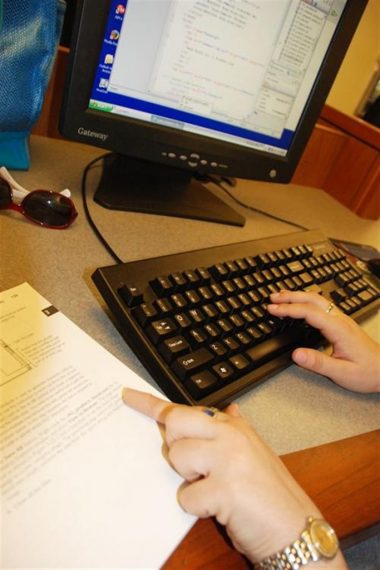What leads to plagiarism in student work? How can educators discourage academic fraud? Two Elon professors believe most student plagiarism happens by mistake. And they say that one way to prevent dishonesty is to make the writing process part of all classroom curricula.

Then there is everything in between.
Rosinksi and Moore, citing other sources in their own handouts at the workshop, discussed “patch writing” as another common problem, where students believe they can take published work and substitute synonyms for key phrases. They may not realize that changing words may still constitute plagiarism, the professors said.
In fact, they argue, “patch writing” may have been acceptable practice in high school, though it does not pass academic muster at Elon.
Nor is it too difficult to spot what may be plagiarized material in a research paper. “If you see a more sophisticated writing style from a student that you aren’t used to seeing, that may be a warning flag,” Moore said. Context is also important. If the tone or depth of a paper abruptly changes, it is possible the student lifted material.
Rosinski and Moore offered the following tips for instructors:
1.) Make clear to students your expectation for documenting sources.
2.) Don’t recycle coursework. Periodically change the topic of papers you assign.
3.) Be more precise when assigning topics. The broader the topic, the greater the availability of similar essays online for students to pass off as their own.
4.) Build the writing process into you curriculum: Assign due dates for rough drafts, implement peer reviews, have students submit research logs one or two weeks before the final paper is due.
5.) Acknowledge common problems with documentation and teach students how to avoid poor attribution.
The difficulty lies in convincing every professor on campus, and across all disciplines, to take this approach. Rosinski and Moore have encountered a small number of educators who believe that by the time a student enters an upper-level course, he or she should know how to attribute information in a research paper. After all, the argument goes, isn’t that what English 110 is supposed to teach?
Both professors said that in some disciplines, conducting research and writing papers isn’t a common assignment. A student may learn the rules for attribution in a freshman course, then not write a large essay again until a junior or senior-year seminar. Moore noted, “English 110 provides a foundation. We need other faculty to reinforce it through continued practice and instruction.”
The most important thing to remember is that research and writing takes time to learn. Students will make mistakes, Rosinski said, and it is up to professors to help them recognize their errors, to use it as a “teachable moment.”
Of course, that assumes suspected plagiarism is simply an honest mistake. With the tendency for many students to postpone assignments until deadline, the convenience of “cutting and pasting” tempts people.
“We really need to teach students how to avoid ending up in this spot,” Moore said.


